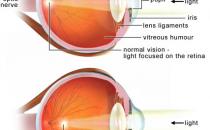Juvenile idiopathic arthritis (JIA)

This factsheet is for parents of children who have juvenile idiopathic arthritis, or people who would like information about it.
Juvenile idiopathic arthritis is inflammation (swelling) and pain in the joints of children that lasts for longer than six weeks.
About juvenile idiopathic arthritis
Types of juvenile idiopathic arthritis
Symptoms of juvenile idiopathic arthritis
Complications of juvenile idiopathic arthritis
Causes of juvenile idiopathic arthritis
Diagnosis of juvenile idiopathic arthritis
Treatment of juvenile idiopathic arthritis
Living with juvenile idiopathic arthritis
About juvenile idiopathic arthritis
Arthritis is a condition that causes pain and swelling in one or more of your joints. Juvenile idiopathic arthritis, also know as juvenile rheumatoid arthritis and juvenile chronic arthritis, is a form of arthritis that affects children under 16. Idiopathic means that there is no known cause.
It has been reported that up to 4 in 1000 children may be affected by juvenile idiopathic arthritis in some countries; however prevalence rates vary widely around the world. This is due to differences in diagnosis and classification of the disease, as well as differences between populations.
Juvenile idiopathic arthritis is a chronic condition. A chronic illness is one that lasts a long time, sometimes for the rest of the affected person's life. When describing an illness, the term 'chronic' refers to how long a person has it, not to how serious a condition is.
Types of juvenile idiopathic arthritis
Juvenile idiopathic arthritis is the most widely accepted term to describe different types of chronic arthritis in children. However, there are seven different types of juvenile idiopathic arthritis, as listed below.
- Oligoarthritis is the most common type of juvenile idiopathic arthritis and the mildest. It usually affects one or both knees and is likely to clear up, leaving little damage to your child's joints.
- Polyarticular juvenile idiopathic arthritis can come on suddenly or affect more joints over several months. It's the second most common type of juvenile idiopathic arthritis.
- Extended oligoarthritis can develop after having oligoarthritis for six months. Your child may have problems with five or more joints.
- Psoriatic arthritis is joint pain that accompanies psoriasis – a skin condition that causes a scaly rash. Your child's joints may start to ache before the rash appears.
- Enthesitis-related arthritis is a form of juvenile idiopathic arthritis that affects the areas where tendons of ligaments attach to bone (the entheses). It usually affects joints in your child's legs and spine.
- Undifferentiated arthritis is when your child's symptoms don't fit into one of the other categories or they fit into more than one category.
- Systemic arthritis is the rarest type of juvenile idiopathic arthritis in which joint pain is part of a general illness.
Symptoms of juvenile idiopathic arthritis
The type of juvenile idiopathic arthritis your child has will be determined by the symptoms that he or she develops in the first six months. Symptoms can vary from day to day, with periods when they flare-up and get worse.
The most common symptoms for all types of juvenile idiopathic arthritis are swollen, painful and stiff joints that are usually worse in the morning. The joint areas may look red and feel hot to touch. The exact symptoms and number of joints affected will vary depending on which type of juvenile idiopathic arthritis your child has.
Children with polyarticular juvenile idiopathic arthritis will have at least five joints affected, including fingers and toes. Swelling and pain may also occur in the hips, neck and jaw. Your child may also have other symptoms, including:
- nodules on his or her elbows – a nodule is a small, round mass or lump
- a rash
- a fever
As well as joint pain, children with systemic juvenile idiopathic arthritis may also have:
- a fever
- a rash
- swollen glands
- a lack of energy and tiredness
- unexplained weight loss
Complications of juvenile idiopathic arthritis
Juvenile idiopathic arthritis may cause inflammation of your child's eyes (uveitis). This can cause blurry vision or total loss of vision. Make sure your child has regular eye checks with an ophthalmologist (a doctor who specialises in eye health, including eye surgery). It's important to tell your child's doctor if there are any changes in your child's eyes or vision.
Juvenile idiopathic arthritis may also affect your child's growth. Overall growth is usually slower. However, depending on the severity of the condition and the joints that are affected, some bones may grow faster than others, causing one leg or arm to be longer than the other.
Your child may have trouble with his or her teeth, especially if their jaw is affected by juvenile idiopathic arthritis. If this happens, your child may need orthodontic treatment (the straightening or moving of teeth, to improve their appearance and how they work).
Causes of juvenile idiopathic arthritis
The exact cause of juvenile idiopathic arthritis isn't understood at present, but it's thought to be an autoimmune disorder that may be caused by genetic factors. This means that the immune system attacks the body instead of defending the body against infection and other harmful substances.
However, not all types of juvenile idiopathic arthritis are autoimmune disorders. Recently, research has suggested that some systemic arthritis is caused by auto-inflammation. Auto-inflammatory disorders are also caused by an overactive immune system, but the reason for the inflammation is unknown.
Diagnosis of juvenile idiopathic arthritis
Your doctor will ask you about your child's symptoms and examine him or her. Your doctor may also ask you about your child's medical history.
There's no single test for juvenile idiopathic arthritis. Your child may need to have one or more of the following tests to help rule out other conditions and identify the type of juvenile idiopathic arthritis they have.
- Blood tests are used to look for inflammation and antibodies. Antibodies are produced by your immune system when you're ill to help fight against bacteria and viruses.
- X-rays can show if there is any damage to your child's joints.
- An ultrasound, using sound waves, can produce an image of the inside of your joints.
- An MRI scan uses magnets and radiowaves to produce images of the inside of your joints.
- Aspiration of a joint – fluid from a swollen joint may be removed and sent to a laboratory to be tested for signs of infection.
Please note that availability and use of specific tests may vary from country to country.
Treatment of juvenile idiopathic arthritis
There isn't a complete cure for juvenile idiopathic arthritis. The aim of treatment is to reduce swelling, maintain full movement of the affected joints, ease pain and prevent any complications.
Self-help
Regular exercise, such as swimming and running, may help ease symptoms. Eating a healthy, balanced diet and getting plenty of sleep can also help with growth and making bones strong.
Physical therapy
Physical therapy plays an important part in the management of juvenile idiopathic arthritis. A physical therapist (physiotherapist) – a health professional who specialises in maintaining and improving movement and mobility – can give your child exercises to do at home to help maintain flexibility, range of motion and joint function. Your child's exercise plan may include:
- muscle strengthening exercises
- balance and co-ordination exercises
- fitness training
- stretches to muscles and joints
- advice on ice therapy, heat packs and other pain relieving methods
Medicines
There are many different medicines available to help control symptoms, slow down or even stop the progression of juvenile idiopathic arthritis. Some examples are listed below.
- Non-steroidal anti-inflammatory drugs (NSAIDs) – such as ibuprofen, can help ease pain, stiffness and swelling.
- Painkillers – such as paracetamol (acetaminophen), can help ease joint pain.
- Steroids – such as prednisolone, can help ease severe swelling. They are usually given as tablets or as an injection into the affected joint.
- Disease-modifying antirheumatic drugs (DMARDs) – such as methotrexate, can ease swelling and reduce joint damage. This type of drug is slow to take effect so your child may not notice any benefits for several months.
- Etanercept – sometimes used if other medicines haven't worked.
- Eye drops – may be used if your child has uveitis.
Always ask your doctor for advice and read the patient information leaflet that comes with your medicine.
Availability and use of different treatments may vary from country to country. Ask your doctor for advice on your treatment options.
Living with juvenile idiopathic arthritis
Most children with juvenile idiopathic arthritis are able to live a normal active life. For some, however, the symptoms may cause problems that make daily life difficult. Your child may find it difficult to bend, get dressed or even walk by themselves.
Your child's doctor will usually provide you with specialist education, advice and support. However, patient support groups can also be useful in putting you in touch with other people who have experience of juvenile idiopathic arthritis for support and guidance. Ask your doctor for information about support groups in your area.
Will my child need to eat a special diet?
Will my child need any special equipment?
Does it matter if my child forgets to take a dose of medicine?
Will my child need to eat a special diet?
No, there is no evidence that following a special diet helps to improve juvenile idiopathic arthritis.
Explanation
Although there don’t appear to be any particular foods that can improve the symptoms of juvenile idiopathic arthritis, it’s important that your child eats a healthy, balanced diet. Include plenty of fruit and vegetables – the UK government recommends that everyone needs to eat at least five portions a day. It’s also important to limit the amount of sugary, fatty foods that your child eats. This is especially important if your child is taking steroids as one of the side-effects of these can be gaining weight.
Juvenile idiopathic arthritis can make some children feel very tired, so try to make sure your child eats lots of foods that are high in protein because this is a very good source of energy. Protein-rich foods include meat, fish, eggs and pulses.
It is important that your child speaks to his/her doctor if he or she chooses to drink alcohol when he or she is older, as alcohol interacts with certain medicines.
Will my child need any special equipment?
It’s possible but it will depend on how severe your child’s condition is.
Explanation
You may need to make adaptations to your home or at school to help your child manage his or her condition more easily. This might include getting a desk that tilts as this can help to keep a more upright posture. Using a wheelchair – which is often only rarely needed – can mean that your child’s muscles weaken because they aren’t being used, so it’s best to encourage him or her not to use one except as a replacement for long periods of walking.
Splints can be helpful to rest and support a joint. Ask your child’s physiotherapist for more information about splints.
It’s important that your child’s school is told about juvenile idiopathic arthritis as he or she may need to take off more time than other children because of the symptoms or to attend check-up appointments. Talk to the teachers about possible considerations for your child, such as allowing extra time to get around between lessons or to complete written work. It’s also important that teachers are aware that your child may be in pain, may not be able to sit cross-legged on the floor and may also get tired more easily.
Your child’s occupational therapist (a health professional who can give practical assistance to help your child manage with everyday tasks and increase their independence) can give you more information about equipment and adjustments at home or school.
Does it matter if my child forgets to take a dose of medicine?
It depends on which medicine it is.
Explanation
It doesn’t matter if your child misses a dose of a non-steroidal anti-inflammatory drug, although their joints may be more painful and stiff than usual. This will also be the case if your child is taking methotrexate and forgets to take a dose, but several missed doses can lead to a more serious relapse in symptoms. A missed dose should never be taken more than 24 hours later than planned. If you remember the missed dose later than this, don’t take it, just take the next one when it’s due. Always read the patient information that comes with your medicine and if you have any questions, ask your doctor or pharmacist for advice.
If your child is on steroids and forgets to take a dose of these, take the missed dose as soon as possible. Several missed doses of steroids can cause serious symptoms such as dizziness and pain in the abdomen. Always speak to your doctor if your child has missed a dose of steroids. Steroids should only be stopped very gradually as otherwise there is a risk of your child having a serious relapse of symptoms.
Further information
-
The Children’s Chronic Arthritis Association
01905 745595
www.ccaa.org.uk
-
Arthritis Care
020 7380 6500
www.arthritiscare.org.uk
-
Arthritis Research Campaign
0870 850 5000
www.arc.org.uk
Sources
- Juvenile idiopathic arthritis (JIA) – a guide for teenagers. Arthritis Research UK. www.arthritisresearchuk.org, published April 2011
- What is JIA? National Rheumatoid Arthritis Society. www.nras.org.uk, published 7 November 2010
- Juvenile arthritis. National Institute of Arthritis and Musculoskeletal and Skin Diseases. www.niams.nih.gov, published September 2011
- Juvenile idiopathic arthritis (JIA). The Merck Manuals. www.merckmanuals.com, published May 2007
- Juvenile rheumatoid arthritis. Lab Tests Online UK. www.labtestsonline.org.uk, published 26 October 2011
- Physiotherapy for children with JIA. Children’s Chronic Arthritis Association. www.ccaa.org.uk, accessed 15 December 2011
- Drug therapy for children with JIA. Children’s Chronic Arthritis Association. www.ccaa.org.uk, accessed 15 December 2011
- Arthritis (juvenile idiopathic) – etanercept. National Institute for Health and Clinical Excellence (NICE), 2011. www.nice.org.uk
- Uveitis. Prodigy. www.prodigy.clarity.co.uk, published November 2009
- Food fact sheet. The British Dietetic Association. www.bda.uk.com, published August 2011
- Juvenile idiopathic arthritis. eMedicine. www.emedicine.medscape.com, published 8 December 2011
- Manners PJ and Bower C. Worldwide prevalence of juvenile arthritis why does it vary so much? J Rheumatol. 2002;29(7):1520-30.
- Clinical guideline for the diagnosis and management of juvenile idiopathic arthritis. Royal Australian College of General Practitioners. www.racgp.org.au, published 2009.
Produced by Dylan Merkett, Bupa Health Information Team, March 2012.
Related topics
- Healthy eating
- Physical activity
- Non-steroidal anti-inflammatory drugs (NSAIDs)
- Rheumatoid arthritis
















